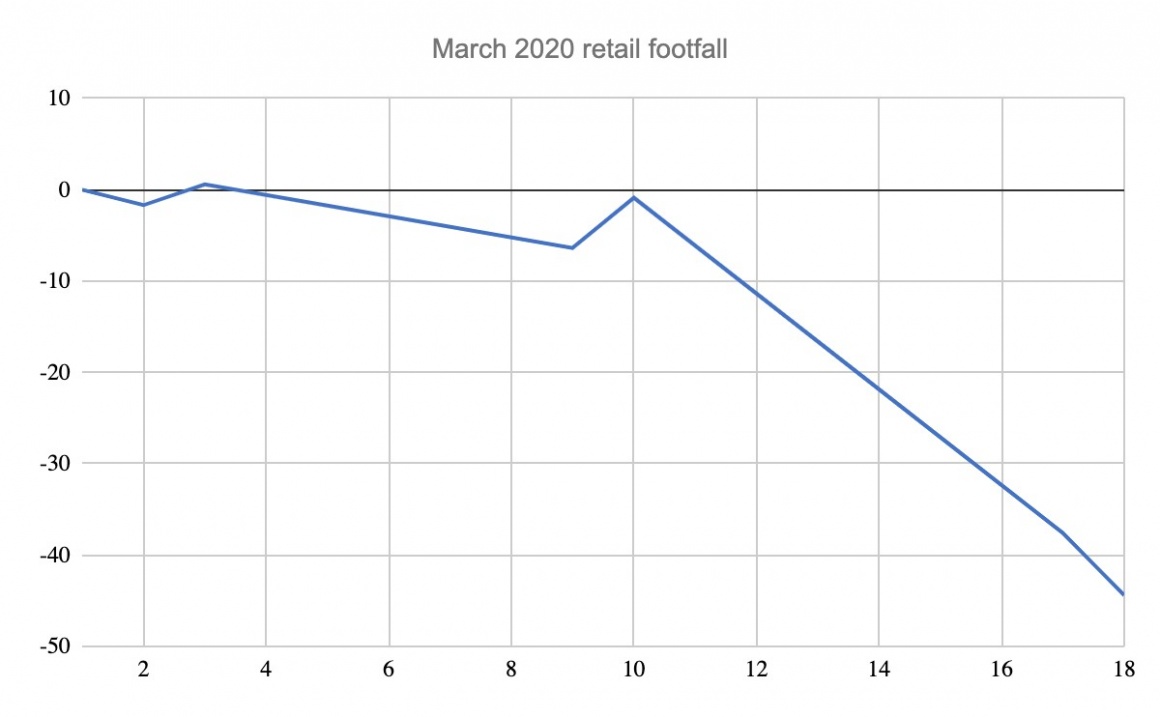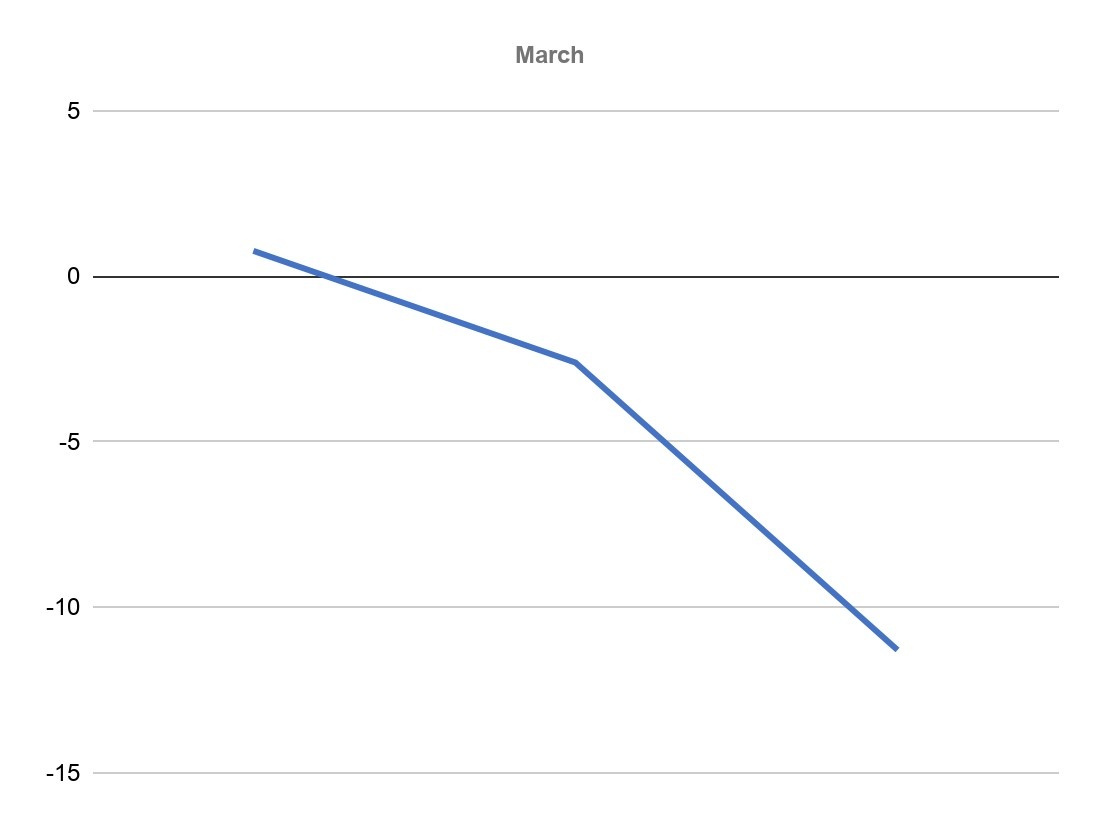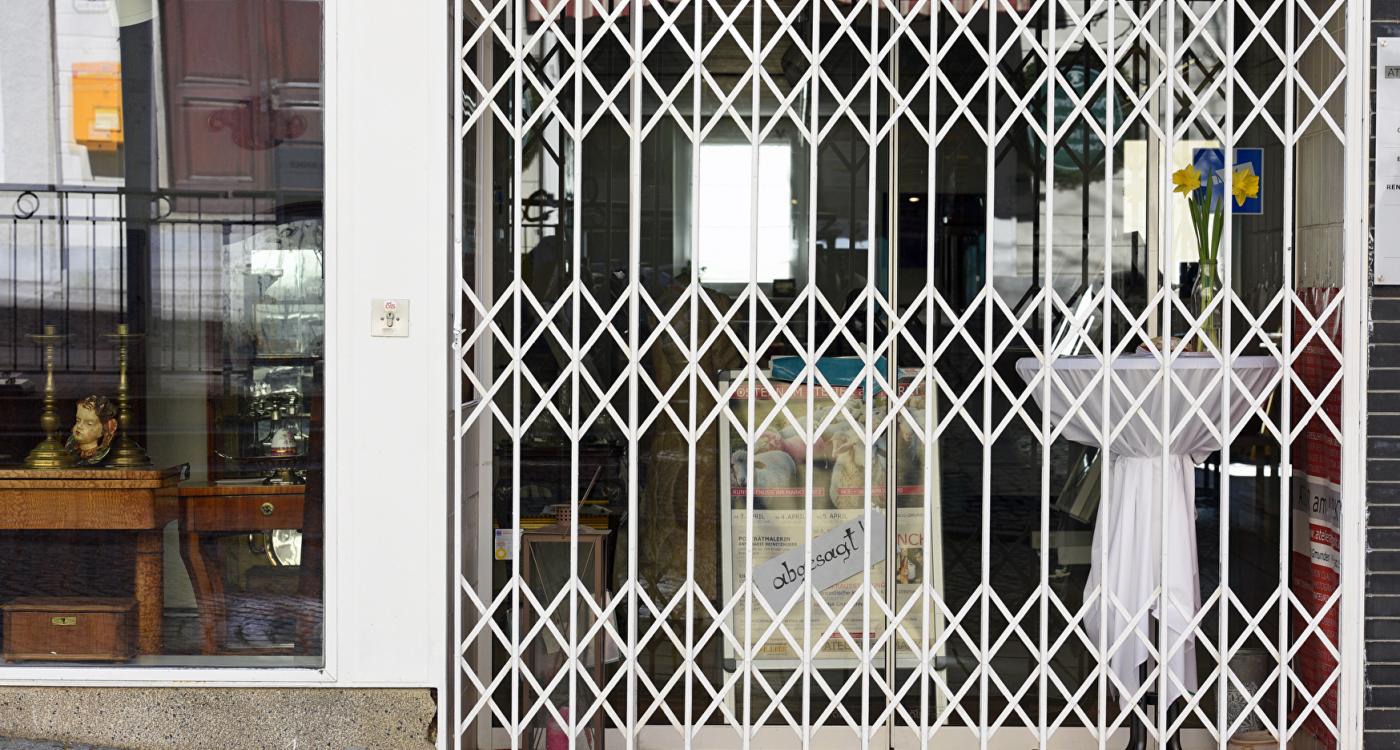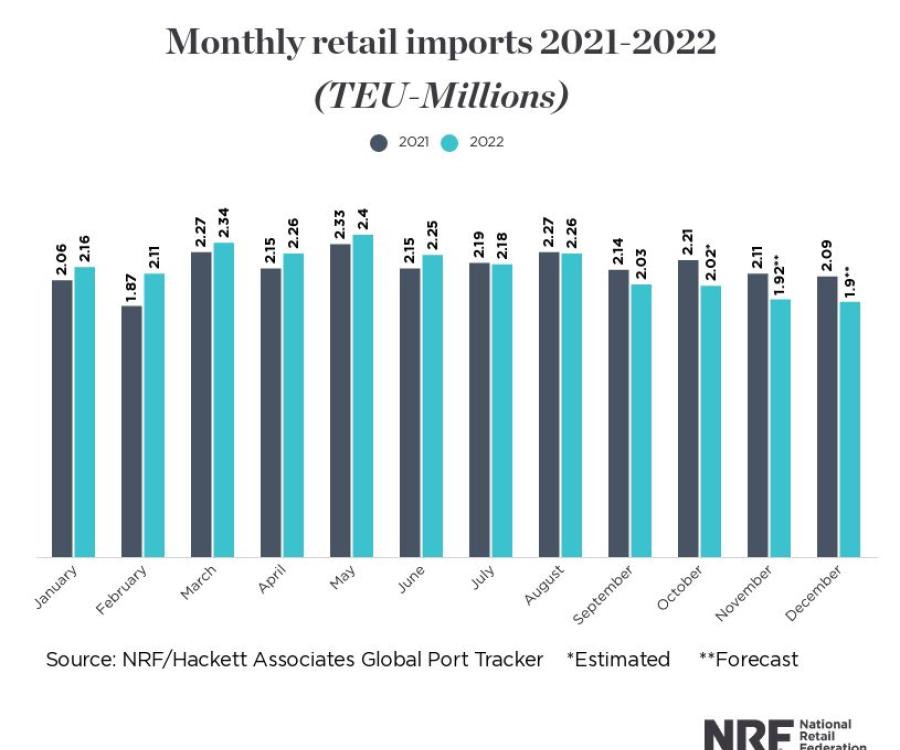Due to the pandemic, Purple has decided to make its data available to all who wish to see, enabling people, businesses and economists to track the real-time impact COVID-19 are having on all industries across the globe.
The enterprise-class analytics and wayfinding business has tried to collate all their information into a visual demonstration of how Coronavirus is affecting retail spaces across Europe.
Figure 1: European retail visits last 30 days

Figure 1 represents the overall decrease of visitors in retail stores across Europe, the data then proceeds to drill down and segment further by showing the impact it has had on some largest countries in Europe; Germany, United Kingdom, and Spain. It highlights the pattern of natural peaks and troughs during the course of a week, with the weekend seeing the most visits, as expected. Data from Figure 1 shows that during the weekend of 14th/15th there was a swift decline as opposed to the usual increase you’d expect to see. Coronavirus during this weekend began to take a much larger impact with many European countries going into lockdown and citizens being told to avoid public places or any “mass gatherings”.
Figure 2: visits over a 10 day period - European retail

Figure 2 showcases the data for 10 days the period in which countries began taking more serious measures in order to protect its citizens, we see a phenomenal decline around 9th March.This coincides with the quarantine and lockdown of the nation of Italy, which has created a large domino effect across the continent, prompting other countries to follow suit, some stricter than others. We can see an unnatural trend in figure 2 with a huge 67 percent decrease in traffic into retail stores compared to just 10 days ago, highlighting the seriousness of the situation for smaller businesses.
Figure 3: decrease in visitors - Spanish retail

Figure 3 collates footfall data from a ten-week period to show the decrease in traffic during the early stages of coronavirus in Europe, through to its current global pandemic stage. Spain declared a state of emergency for its residents which has caused an approximate 30 percent decrease in such a short period of time and with this being enforced for the next 15 days minimum, it’s expected to see a further decrease.
Figure 4: decrease in visitors - German retail

Figure 4 indicates that Germany has seen a more gradual decrease of visitors to retail stores, compared to the country of Spain. This may suggest differences in measures taken by each nation’s government and the seriousness of which its citizens headed their government's advice. As of March 16th, Germany closed its borders to neighboring countries, in which we expect to see a continuous downward trend. Much like figure 4 illustrates.
Figure 5: UK retail footfall data

UK retail data shown in Figure 5 differs from the other countries to reflect the differences in the respective countries’ “pandemic timeline” with the UK taking measures at a different time than others. Figure 5 illustrates how retail footfall and consumers are down by approximately 50 percent with the most noticeable decrease beginning from 10th March until today. The likelihood of this occurrence is the UK government’s decision to increase the measures it would take to ensure the safety and wellbeing of its citizens. The United Kingdom has taken further action by strongly encouraging social distancing and imposing self-isolation on those who have been into contact with others and are yet to show symptoms and now schools are closing. We expect to see an even greater decline in retail visitors over the forthcoming weeks.
Figure 6: percentage decline in restaurant visitors across Europe

Retail isn’t the only industry being heavily affected by the current situation, restaurants are another industry that's suffering. Already since the start of March, you begin to see the clear impact that COVID-19 is having with an average decrease across the continents off around 11 percent. Although it must be taken into account that countries have imposed different measures at contrasting times, respective of the severity of the pandemic. As the month continues and comes to an end, we expect to see a much higher rate than figure 6.
Visit the live tracker of Purple for more real-time updates.






